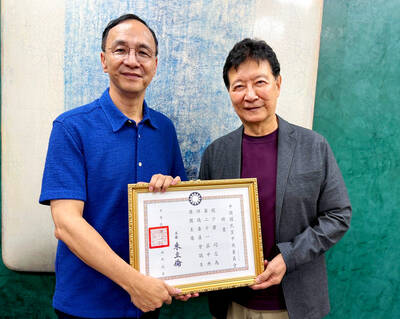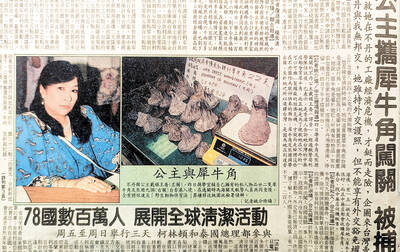Indian scientists have carried out vasectomies on scores of cross-bred lions, the results of experiments to create new sub-species, to let them die out in a "controlled
extinction".
All 300 captive animals, a mix of Asian and African lions many of whom are deformed and diseased, are expected to be dead by 2008, scientists said.
"The law of the land does not allow for mercy killing or culling," said Bipul Chakravarty, a senior scientist of India's Central Zoo Authority which devised the program.
Indian authorities say the animals were cross-bred until 1992 in free-for-all, weakening the genetic pool of Indian cats.
The experiments even extended to mating lions with tigers.
"Until we made guidelines 12 years ago, some were experimenting, producing `Tigons' by mating tigers with lionesses and `Litigons' by crossing lions with tigresses. None of these are now living," the wildlife scientist said.
As problems of cross-breeding became apparent, "Zoos with hybrids were asked to take population control measures as these animals have no conservation value at all," the wildlife scientist said.
The national zoo watchdog sterilized all its 300 hybrid outcasts between 1999 and 2001 to ensure no new so-called "cocktail lions" were born, and stepped up a campaign for captive breeding of India's pure Asiatic lions.
"Most of these cocktail lions are adults and we're looking at another four years for the stock to end but we're not denying them any animal welfare facilities. They will die a natural death," Chakravarty said.
Zoo authorities have evolved stringent laws on mating at India's 161 state-run zoos and safari parks as part of the national cleanup of animal gene banks.
Officials at the Ministry of Environment and Wildlife said the process was being kept under a microscope.
"It may sound politically incorrect but it's a controlled extinction programme to set right the chaos that occurred in the 1980s when African lions rescued from circuses mixed with the Asiatic cats in our zoos," a senior ministry official, who did not wish to be named, said.
The cocktail lions have lower immunity and are prone to disease. Many are in a poor physical state with dull coats and thin manes,
suffering from a variety of ailments caused by inbreeding.
But in the early years, the genetic problems of the crossed species did not show up, and many were bred so there would be more cats available for exhibition at zoos and safari parks.
Chatbir Park, near the northern city of Chandigarh, holds 30 hybrid lions which belong to an original litter of an unhealthy pride produced by African lions mating with Asiatic types, ministry officials said.
"Their population increased manifold especially in Chatbir so we asked Central Zoo Authority to take action to prevent proliferation of the hybrids," Chakravarty said. Chatbir Zoo was at the centre of a key breeding program.
"Now we're waiting for them to die out so we can replace them with pure Asiatic stock," Chakravarty said of the zoo, where many of the diseased lions can barely let out a growl, let alone lead a charge.
There are 131 pure-bred Asiatic lions in 58 zoos and national safaris -- their number having swollen by 50 in the past decade because of an accelerated captive breeding program, the Central Zoo Authority officials said.
Some 380 Asiatic lions, smaller than the African variety, roam the wild while about 300 hybrids are segregated in facilities including New Delhi's renowned Purana Quila zoological park.
"Although the two hybrid lions we have are sterilized, we're not taking chances and we're keeping them segregated," said Ram Babu, a Delhi zoo warden.

Next week, candidates will officially register to run for chair of the Chinese Nationalist Party (KMT). By the end of Friday, we will know who has registered for the Oct. 18 election. The number of declared candidates has been fluctuating daily. Some candidates registering may be disqualified, so the final list may be in flux for weeks. The list of likely candidates ranges from deep blue to deeper blue to deepest blue, bordering on red (pro-Chinese Communist Party, CCP). Unless current Chairman Eric Chu (朱立倫) can be convinced to run for re-election, the party looks likely to shift towards more hardline

Sept. 15 to Sept. 21 A Bhutanese princess caught at Taoyuan Airport with 22 rhino horns — worth about NT$31 million today — might have been just another curious front-page story. But the Sept. 17, 1993 incident came at a sensitive moment. Taiwan, dubbed “Die-wan” by the British conservationist group Environmental Investigation Agency (EIA), was under international fire for being a major hub for rhino horn. Just 10 days earlier, US secretary of the interior Bruce Babbitt had recommended sanctions against Taiwan for its “failure to end its participation in rhinoceros horn trade.” Even though Taiwan had restricted imports since 1985 and enacted

Last week the story of the giant illegal crater dug in Kaohsiung’s Meinong District (美濃) emerged into the public consciousness. The site was used for sand and gravel extraction, and then filled with construction waste. Locals referred to it sardonically as the “Meinong Grand Canyon,” according to media reports, because it was 2 hectares in length and 10 meters deep. The land involved included both state-owned and local farm land. Local media said that the site had generated NT$300 million in profits, against fines of a few million and the loss of some excavators. OFFICIAL CORRUPTION? The site had been seized

Enter the Dragon 13 will bring Taiwan’s first taste of Dirty Boxing Sunday at Taipei Gymnasium, one highlight of a mixed-rules card blending new formats with traditional MMA. The undercard starts at 10:30am, with the main card beginning at 4pm. Tickets are NT$1,200. Dirty Boxing is a US-born ruleset popularized by fighters Mike Perry and Jon Jones as an alternative to boxing. The format has gained traction overseas, with its inaugural championship streamed free to millions on YouTube, Facebook and Instagram. Taiwan’s version allows punches and elbows with clinch striking, but bans kicks, knees and takedowns. The rules are stricter than the